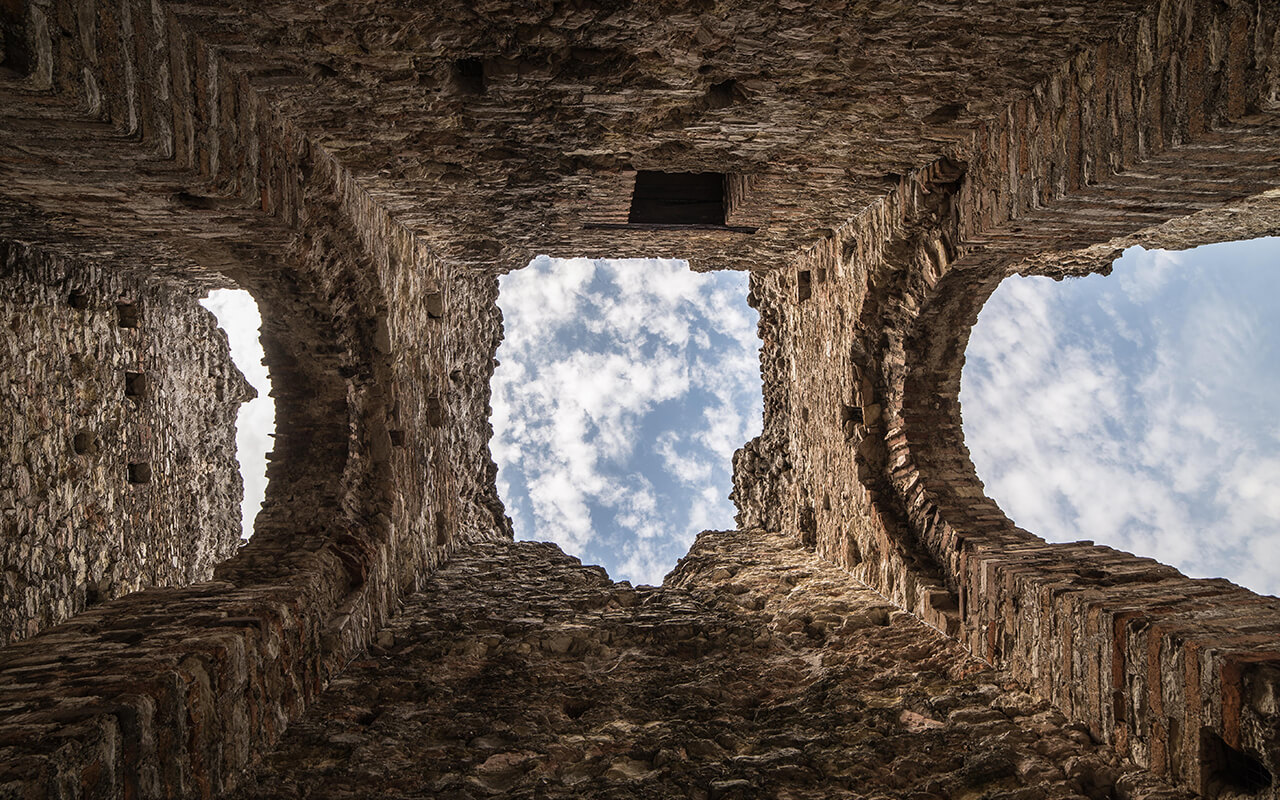The Roman Age

Then also the land was inhabited, although the documentation that confirms the arrangement lacks until the Romans. It’s thought that the original settlement of Sirmione was born thanks to certain characteristics of the site.
First, the particular shape of this strip of land surrounded by water, and therefore safe. The area at north of the castle, which has the shape of a triangle with the longest side of m.1250 and maximum width of m. 750, consists of three hills: Curtains, San Pietro in Mavinas, the “Catullo’s Caves”.
On it there are the ruins of a Roman villa (the first century A.D.) that a long tradition without foundation attributes to the poet Catullus, who lived in the I century B.C. It ‘s likely, however, that the family of Verona, the Valeri, who the poet belonged to, had possessions in Sirmione, some of his famous lines substantiate this hypothesis. The peninsula, in fact, as all the coast of the low Garda, was a resort for high-ranking families, as evidenced by the discovery of at least three houses, of which only the ruins, called just “Catullo’s Caves”, survive.
The “Catullo’s Caves”, covering an area of two hectares, are the most impressive archaeological site in northern Italy. The vastness of the site and the scarcity of easily interpretable remains, however, make it difficult for the inexperienced tourists to pay a visit that will allow them to orient themselves in a satisfactory manner. The visitor who expects ruins similar to Pompei will surely disappoint :there’s almost nothing left of the villa itself, what you can see are the substructures ,that is the powerful masonry intended to support the building and placed below it, and some service areas. Nevertheless, the charm of this place did not pass unnoticed by the visitors of the past, who were able to capture the harmony of the fusion of the ancient rose-colored stones with the unique landscape in which they are immersed. Knowing how to appreciate both the signs of antiquity and the beauty of nature makes the visit complete and unforgettable.

Besides its natural beauty, Sirmione was important in Roman road system: it stood on the Gallic road, the ancient road that came through Bergamo and Brescia to Verona, where it was connected to the Postunia road which, built in 148 BC, united Genoa to Aquileia. In Desenzano the Gallic road continued to Peschiera along the coast, through Rivoltella and Colombare.
The Itinerarium Antonini, a text of the third century A.D. testifies the existence of a place where travellers could stop, the mansion Sirmione, situated half way between Brescia and Verona. Scholars believe that the old mansio was located in Vecchia Lugana, where there is a building which has been indicated by the maps as Osteria or Betola, i.e. a place of rest and refreshment, already in the fifteenth century. Here the Roman road was connected to the ancient village road, the actual Via Lucchino, now a pedestrian promenade along the eastern shore of the lake. Then it continued towards Peschiera, hugging the shore more than the current Highway 11.


